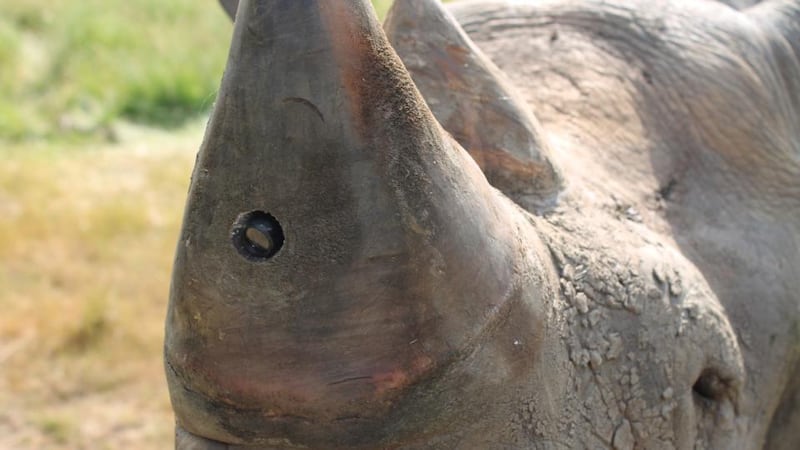The war against rhino poaching in South Africa is going high tech in an attempt to curb a death toll that continues to spiral despite money being pumped into the fight by the government and conservationists.
We Are Protect, a UK-based conservation group, has developed the Real-time Anti-Poaching Intelligence Device, or Rapid. It consists of a spy camera for its horn, a heart monitor to go under its skin, and a global positioning system tracker. Attach it to a rhino and information about the animal’s wellbeing and whereabouts is available instantly.
If the animal’s heart rate increases, as it would if it were under threat, wildlife rangers can activate the camera for live footage of its surroundings. If they believe that poachers are responsible they can deploy a rapid-response team, guiding them via GPS.

Rapid’s makers hope that their device will help rangers overcome one of the main problems they face when they try to combat rhino poaching: it’s very hard to target the perpetrators because most wildlife parks are so big; and the poachers are good at moving stealthily through the bush.
“Rapid acts as a deterrent, so that poachers realise that any animal that’s got one of these collars or units attached to it is basically off the list,” says Steve Piper of We Are Protect. “There’s no point in attacking it, there’s no point in killing it, because you’re never going to get away with the valuable parts of the animal . . .
“You’re looking at a fraction of a second from a rhino getting stressed or upset to the alarm being raised, so there’s really no opportunity for poachers to cut off” the horn.
South Africa’s battle against rhino poaching is in full swing. The government has increased the number of rangers and soldiers on patrol in its game parks, as well as adding helicopters, drones and tracker dogs to its anti-poaching arsenal. And numerous other anti-poaching initiatives are under way that involve approaches such as dehorning the animals or moving them away from dangerous areas.
But poaching is still widespread. Nationwide at least 749 rhinos have been poached this year; 544 of these have been killed in the Kruger, a national park the size of Israel that borders Mozambique and Zimbabwe.
The illegal practice looks to be on course to match last year’s record number of 1,215 dead animals; 3,886 rhino have been poached in South Africa, according to savetherhino.org, since 2007, when just 13 animals were killed. Africa’s black and white rhino population is estimated at about 26,000, the vast majority of them in South Africa.
Many of the Kruger poachers are predominately poor people from neighbouring countries whom criminal syndicates hire to kill the animals in return for what investigators say amounts to about €5,000.
Kruger officials say there are 12 to 15 heavily armed poaching gangs – which amounts to at least three individual poachers active in the park at any time. Gun battles are common between them and rangers or soldiers.
Even though the poachers are paying a heavy price – the former president of Mozambique Joaquim Chissano reportedly said recently that 500 alleged poachers from his country had been killed in Kruger since 2010 – the activity remains at an unprecedentedly high level. It is driven by demand in countries such as Vietnam, where horns are used in traditional medicine, as ornaments or as a delicacy to be sprinkled on to food or into drinks. Made from keratin, the protein also found in human skin, hair and nails, the horns fetch up to €60,000 a kilo – which is to say about €180,000 for an average horn – on the black market.
Steve Piper of We Are Protect says that its team has moved from proof-of-concept trials to small-scale field testing at secret locations in South Africa.
“We always had confidence in the concept, having designed it around the needs that anti-poaching rangers explained to us. We just had to make sure it was technically feasible . . . The field testing currently taking place is to further refining the design and components.
“How long it takes depends on a lot of factors. We hope to get to an advanced stage next year, but it depends how different components work out in practice – and, unfortunately, funding plays a role as well.”
We Are Protect hopes that Rapid could be rolled out to protect other endangered species once it receives wider support. A version for tigers is already under development, according to Piper.










